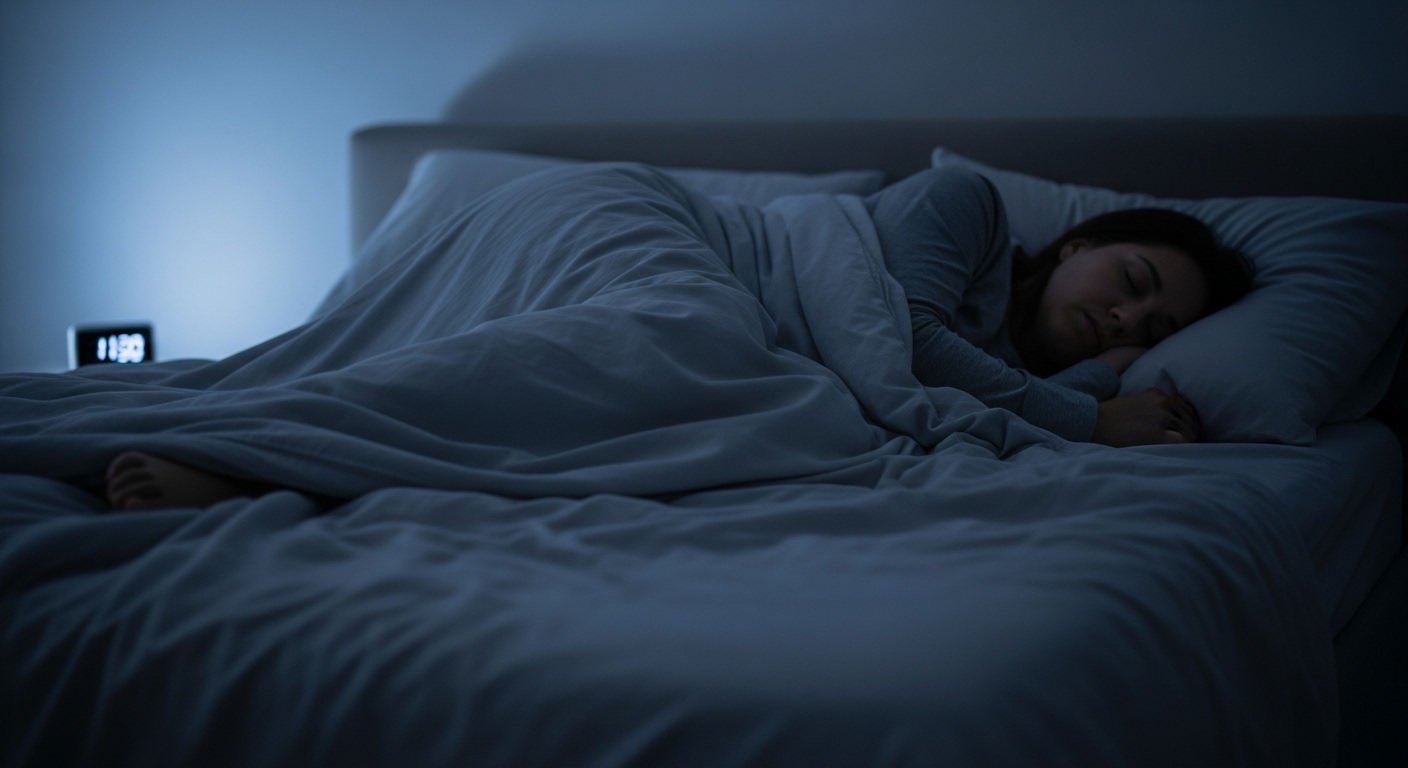by Brooke Balentine (https://unsplash.com/@brookebalentine)
Restless Legs Syndrome is a neurological disorder that causes unpleasant sensations in the legs, typically during periods of inactivity, such as when lying down or sitting. These sensations can range from tingling or burning to creeping and crawling feelings. The discomfort prompts an irresistible urge to move the legs in an effort to alleviate these sensations. This condition can be frustrating and, if left unmanaged, can severely impact one’s quality of life.
Recognizing RLS Symptoms
The primary symptoms of RLS include:
- An uncontrollable urge to move the legs, usually accompanied by uncomfortable sensations.
- Symptoms that worsen during periods of rest or inactivity, particularly at night.
- Temporary relief from symptoms when moving or stretching the legs.
- Sleep disturbances due to symptoms being more pronounced at night.
These symptoms can vary in intensity and frequency, with some individuals experiencing mild discomfort, while others may face severe sleep disruptions. In severe cases, the symptoms can occur daily, significantly affecting sleep patterns and leading to chronic sleep deprivation. Recognizing these symptoms early on can help in seeking appropriate treatment and managing the condition effectively.
The Impact of RLS on Sleep
Restless Legs Syndrome significantly affects sleep quality. The urge to move the legs and the accompanying discomfort often lead to difficulty falling asleep and staying asleep. This can result in chronic sleep deprivation, affecting daytime functioning and overall well-being. In many cases, individuals with RLS may find themselves waking up multiple times during the night, unable to achieve restful sleep.
RLS and Sleep Disturbance
People with RLS often experience fragmented sleep, which can lead to:
- Daytime fatigue and drowsiness
- Difficulty concentrating
- Mood disturbances
- Decreased quality of life
The cycle of sleep disruption and daytime fatigue can exacerbate the symptoms of RLS, creating a challenging situation for those affected. Over time, chronic sleep deprivation can lead to more severe health issues, including anxiety and depression. Addressing sleep disturbances is crucial in breaking this cycle and improving the overall quality of life for individuals with RLS.
Causes of Restless Legs Syndrome
The exact cause of RLS remains unknown, but several factors are believed to contribute to its development. Identifying these contributing factors can aid in better understanding the condition and finding effective management strategies.
Genetic Factors
Research suggests that RLS may have a genetic component, as it often runs in families. If you have a family member with RLS, your chances of developing the condition may be higher. Studies have identified specific genetic markers that may be associated with the condition, indicating a hereditary link. Understanding this genetic predisposition can help in early diagnosis and intervention.
Dopamine Dysfunction
Dopamine is a neurotransmitter that plays a crucial role in controlling muscle movements. Dysfunction in the dopamine pathways is thought to contribute to RLS, leading to the characteristic symptoms. This dysfunction can disrupt normal muscle activity, causing the uncomfortable sensations and urges to move. Targeting dopamine pathways through medication can be an effective treatment for some individuals.
Iron Deficiency
Iron deficiency, even without anemia, can lead to or worsen RLS symptoms. Iron is essential for dopamine function, and a deficiency may disrupt this process. Ensuring adequate iron levels through diet or supplements can help in managing RLS symptoms. Regular monitoring of iron levels can be beneficial for those at risk of deficiency.
Other Medical Conditions
RLS can be associated with other medical conditions such as:
- Chronic kidney disease
- Diabetes
- Parkinson’s disease
- Peripheral neuropathy
Pregnancy can also trigger RLS symptoms, particularly in the third trimester, but these usually resolve after delivery. Identifying and managing these associated conditions can help in alleviating RLS symptoms. Collaborative care with healthcare providers can lead to more comprehensive management plans.
Managing RLS at Night
While there is no cure for RLS, several strategies can help manage symptoms and improve sleep quality. By adopting a proactive approach, individuals can find relief and enhance their overall quality of life.
Lifestyle Modifications
Implementing certain lifestyle changes can significantly alleviate RLS symptoms:
- Regular Exercise: Engaging in moderate physical activity can help reduce symptoms. However, avoid vigorous exercise close to bedtime. Activities such as walking, swimming, or yoga can be beneficial.
- Sleep Hygiene: Establish a regular sleep schedule, create a comfortable sleep environment, and avoid caffeine and nicotine, which can worsen symptoms. Maintaining a consistent bedtime routine can promote better sleep quality.
- Stress Reduction: Techniques such as yoga, meditation, and deep breathing can help reduce stress, which may exacerbate RLS symptoms. Managing stress levels can lead to a reduction in symptom severity and frequency.
RLS Remedies
Several home remedies may provide relief from RLS symptoms:
- Warm Baths and Massages: Soaking in a warm bath and massaging the legs can relax muscles and reduce discomfort. This can be particularly beneficial before bedtime.
- Hot or Cold Packs: Applying hot or cold packs to the legs can help alleviate symptoms. Alternating between heat and cold can provide additional relief.
- Foot Wraps: Specialized foot wraps designed to apply pressure to the legs can provide relief for some individuals. These wraps can be worn during periods of inactivity to reduce discomfort.
Medical Treatments
For those with moderate to severe RLS, medical treatments may be necessary. Options include:
- Medications: Dopaminergic agents, anticonvulsants, and opioids are commonly prescribed to manage RLS symptoms. These medications can help regulate dopamine levels and reduce discomfort.
- Iron Supplements: If iron deficiency is contributing to RLS, supplements may be recommended. Regular blood tests can help monitor iron levels and adjust supplementation as needed.
It’s essential to work closely with a healthcare provider to determine the most appropriate treatment plan. Regular follow-ups can help in monitoring progress and making necessary adjustments.
by Fotos (https://unsplash.com/@fotospk)
Seeking Help for Restless Legs
If you suspect you have RLS, it’s important to seek medical advice. A healthcare professional can help diagnose the condition and recommend suitable treatments. Early intervention can prevent the progression of symptoms and improve quality of life.
Diagnosis
Diagnosis of RLS is primarily based on clinical evaluation, focusing on the characteristic symptoms. In some cases, blood tests may be conducted to check for iron deficiency or other underlying conditions. A thorough evaluation can help in ruling out other potential causes of symptoms and ensure an accurate diagnosis.
Long-term Management
Living with RLS requires ongoing management. Regular follow-ups with a healthcare provider can help monitor symptoms and adjust treatment plans as needed. Support groups and educational resources can also provide valuable information and support. Engaging with others who have RLS can offer insights and strategies for managing the condition effectively.
Conclusion
Restless Legs Syndrome is a challenging condition that can significantly disrupt sleep and daily life. However, with proper understanding and management strategies, individuals with RLS can lead fulfilling lives. By addressing lifestyle factors, exploring home remedies, and seeking medical treatment when necessary, relief from RLS symptoms is achievable. Knowledge and proactive management are key to enhancing quality of life and ensuring restful sleep.
Understanding RLS and taking proactive steps can improve sleep quality and enhance overall well-being. If you or someone you know is struggling with RLS, don’t hesitate to reach out for help and explore the available solutions. With the right approach and support, managing RLS is possible, paving the way for a healthier and more restful life.








